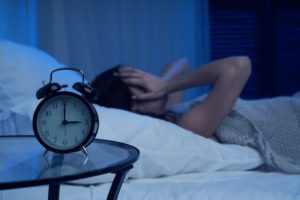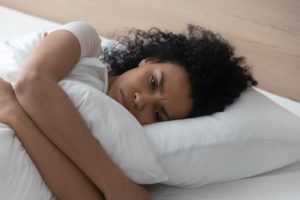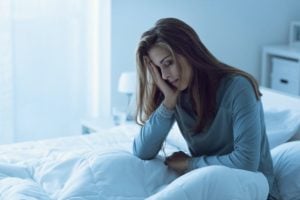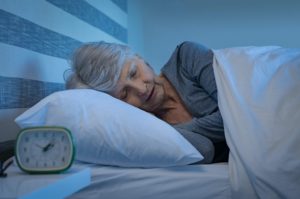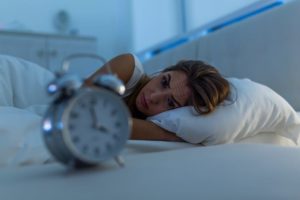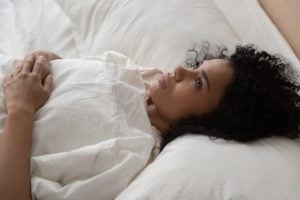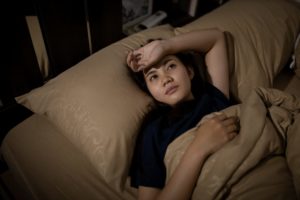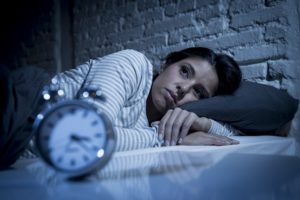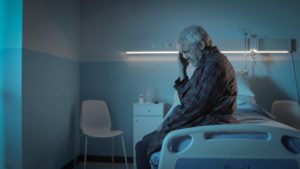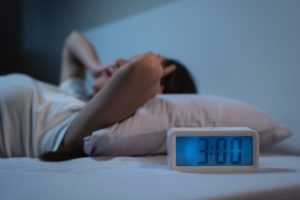When you buy through our links, we may earn a commission. Products or services may be offered by an affiliated entity. Learn more.
Diagnosing Insomnia
Insomnia is a sleep disorder that affects 10-30% of adults. It is characterized by difficulty falling asleep, staying asleep, or both, even if you have ample time and a bedroom environment conducive to restful sleep.
Many people experience problems falling or staying asleep, but patients must meet certain criteria in order to receive a formal insomnia diagnosis. The diagnostic process may consist of multiple exams and appointments.
Struggling to Stay Awake? Take an At-Home Sleep Test

our partner at sleepdoctor.com
10% off Home Sleep Tests
Buy Now“Truly grateful for this home sleep test. Fair pricing and improved my sleep!”
Dawn G. – Verified Tester
How to Diagnose Insomnia
The requirements for an insomnia diagnosis are continually evolving as researchers learn more about this sleep disorder. According to current criteria, patients must report at least one of the following problems in order to receive an insomnia diagnosis.
- Difficulty falling asleep
- Difficulty remaining asleep during the night
- Repeated instances of waking up earlier than desired
- Feelings of resistance about going to sleep at a reasonable hour
- Difficulty sleeping without help from a parent or caregiver
Additionally, patients must experience one or more of the following daytime impairments after a night of insomnia-affected sleep:
- Feelings of fatigue or malaise
- Difficulty concentrating, paying attention, recalling, or remembering
- Impaired performance in social, family, academic, or occupational settings
- Excessive daytime sleepiness
- Hyperactivity, impulsivity, aggression, and other behavioral problems
- Decreased energy, motivation, or initiative
- Higher risk of errors or accidents
- Concerns or dissatisfaction regarding sleep
These nighttime and daytime symptoms must occur despite adequate opportunity for sleep and a bedroom environment that is conducive to sleep. If symptoms occur at least three times per week for at least three months, the patient will be diagnosed with chronic insomnia. If these benchmarks have not been reached, then the condition is known as short-term or acute insomnia. A third condition known as other insomnia may be diagnosed if the patient does not meet the criteria for short-term insomnia but nonetheless exhibits insomnia symptoms.
The cause of a person’s insomnia symptoms is also crucial to their diagnosis. Primary insomnia occurs independently, while secondary insomnia is usually attributed to an underlying medical or psychological condition that causes sleep loss. Primary and secondary insomnia share the same symptoms. However, treatment for secondary insomnia will typically also address the patient’s underlying condition.
Risk Factors for Insomnia
While insomnia may arise from an underlying problem or be a primary condition, people are more susceptible to insomnia symptoms based on certain risk factors . These include:
- Age: You can develop insomnia symptoms at any age, including childhood, but your risk for insomnia – and sleep problems in general – tends to increase as you get older.
- Sex: Insomnia is more common for women. In particular, the hormonal changes a woman undergoes during pregnancy can cause sleep problems.
- Family history: Insomnia symptoms can be genetically inherited, as can your likelihood of being a “light” or “heavy” sleeper.
- Bedroom environment: In order to promote healthy sleep, your bedroom should be quiet and relatively light-free. A balanced temperature – neither too hot nor too cold – is also important.
- Occupation: You may be at higher risk for sleep difficulties if you work shifts that include late night or early morning hours. Frequent travel across different time zones can also make you more vulnerable to jet lag.
- Sleep routines: Napping too much during the day can affect how tired you feel at night, which in turn can contribute to sleep loss. You should maintain a regular sleep schedule that includes the same sleeping and wake-up times each day.
- Lifestyle: Lack of exercise during the day can contribute to sleep problems. Additionally, caffeine, tobacco, alcohol, and illegal drugs can all affect how well and how long you sleep each night.
- Stress: Problems at school or work, marital difficulties, and the death of a loved one can all cause undue stress that impacts sleep onset, duration, and quality.
- Medical Conditions: Underlying medical conditions such as breathing difficulties or sleep apnea, can result in insomnia.
Seeing a Doctor About Insomnia
During your initial insomnia test screening, the doctor will inquire about your lifestyle and any risk factors that may be contributing to your sleep problems. You should keep a sleep diary for at least one week prior to this first appointment. Documenting time asleep and awake each night, the number of times you wake up, the amount of caffeine and alcohol you consume, and other details can assist the doctor with their diagnosis.
The doctor may ask you to complete a questionnaire regarding your sleep habits and schedule. Common areas of questioning include:
- Your history of sleep problems and how long you’ve been dealing with your present issues
- When you go to bed and get up during the week, and whether these times differ from your weekend sleep schedule
- How long it takes you to fall asleep each night
- How often you typically wake up during the night, and how long it takes you to fall asleep after each waking episode
- How you feel in the morning – specifically, whether you feel well-rested or tired
- If you snore loudly or wake up gasping for air during the night; an affirmative answer here may indicate sleep apnea or another sleep-related breathing disorder
- If you use electronic devices or watch television in the hours before bedtime
- Whether you’ve recently started experiencing a new health problem or have ongoing medical issues
- If you take any prescription or over-the-counter medication
- If you’re a woman who is pregnant or undergoing menopause
- Whether you use caffeine, nicotine, alcohol, and/or illegal drugs
In addition to the questionnaire, the doctor will perform a medical exam to check for signs and symptoms of problems that impact sleep. During this process, they will listen to the heart and lungs, and also check to see if you have relatively large tonsils or an above-average neck circumference – both risk factors for sleep apnea.
Additional Diagnostic Tests
In some cases, the doctor won’t be able to make a firm insomnia diagnosis without further testing. They may refer you for one of the following procedures:
- Sleep study: The doctor may prescribe an overnight sleep study , also known as a polysomnogram test. This study may require you to spend the night at a dedicated sleep center with sensors on your scalp, face, eyelids, chest, limbs, and one finger. The sensors monitor brain wave activity, heart and breathing rates, oxygen levels, and muscle movements that occur prior to, during, and after sleep. Home sleep studies can also be conducted with a portable kit. Alternatively, some daytime tests monitor sleep latency during a series of naps or evaluate your abilities to stay awake and alert after a night of normal sleep. Regardless of which sleep study for insomnia you undergo, the procedure will be non-invasive and painless.
- Actigraphy: Actigraphy tests are somewhat similar to overnight sleep studies, but in most cases you’ll conduct the tests at home. For this test, you’ll wear a sensor on your wrist or ankle that monitors sleep and wakefulness patterns. The recommended duration for wearing the sensors is three to 14 consecutive days. In addition to diagnosing insomnia, actigraphy can be used to test for sleep apnea, circadian rhythm sleep disorders, and other sleep-related conditions. Actigraphy is considered safe for children and adults, though the sensor may cause some light – albeit temporary – irritation.
- Blood tests: A host of medical conditions can cause or exacerbate sleep problems. Depending on how your questionnaire and physical exam goes, the doctor may recommend blood tests to check for thyroid issues and other pre-existing conditions.
If you meet the diagnostic criteria for chronic or short-term insomnia based on your sleep disorder test, then you may advance to insomnia treatment. Treating insomnia may consist of cognitive behavioral therapy for insomnia (CBT-I), lifestyle changes that improve sleep hygiene, prescription medication, or a combination of these three options.
Always seek out your doctor or another credentialed physician to discuss insomnia symptoms, and never self-diagnose the condition or attempt to treat your symptoms without the proper evaluations and testing.

Still have questions? Ask our community!
Join our Sleep Care Community — a trusted hub of sleep health professionals, product specialists, and people just like you. Whether you need expert sleep advice for your insomnia or you’re searching for the perfect mattress, we’ve got you covered. Get personalized guidance from the experts who know sleep best.
References
4 Sources
-
National Heart Lung and Blood Institute. (2020, March 2). Insomnia., Retrieved September 10, 2020, from
https://www.nhlbi.nih.gov/health-topics/insomnia -
National Heart, Lung, and Blood Institute. (2022, March 24). Sleep studies., Retrieved September 10, 2020, from
https://www.nhlbi.nih.gov/health/sleep-studies -
Smith, M. T., McCrae, C. S., Cheung, J., Martin, J. L., Herrod, C. G., Heald, J. L., & Carden, K. A. (2018). Use of Actigraphy for the Evaluation of Sleep Disorders and Circadian Rhythm Sleep-Wake Disorders: An American Academy of Sleep Medicine Clinical Practice Guideline. Journal of Clinical Sleep Medicine, 14(7), 1231–1237., Retrieved from
https://www.ncbi.nlm.nih.gov/pmc/articles/PMC6040807/ -
National Heart, Lung, and Blood Institute. (n.d.-b). Blood Tests., Retrieved September 10, 2020, from
https://www.nhlbi.nih.gov/health-topics/blood-tests







